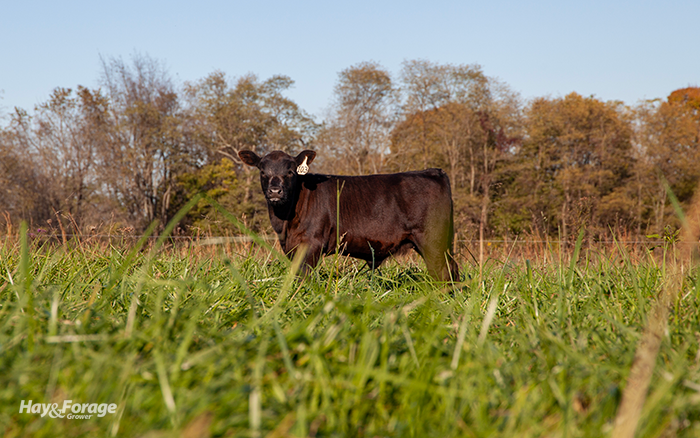
In regions where tall fescue dominates the pasture base, stockpiling can be an economical way to preserve forage quality and feed cattle through the winter. With that said, the way in which stockpiled tall fescue is grazed can significantly impact forage utilization and grazing days per acre.
Strip grazing is an effective tool to make the most of stockpiled tall fescue; however, where other forages are still available, it may behoove farmers to refrain from jumping on the tall fescue train too early. In a recent article from the University of Kentucky’s Off the Hoof newsletter, Chris Teutsch provides the following tips for grazing winter pastures and maximizing stockpiled forage.
Graze warm-season grasses first. Warm-season grass quality will decline earlier than other cool-season grasses, legumes, and forbs. Moreover, Teutsch notes this quality decline will occur more rapidly as the weather turns colder.
Next, graze clover. After utilizing any available warm-season grasses, target mixed pastures that are high in clover since these species don’t tolerate freezing and thawing as well as tall fescue. In fact, Teutsch recommends saving pure tall fescue stands that were stockpiled for later in the season, if possible, since the grass is hardier and will maintain better nutritive value for longer.
Then, strip graze tall fescue. When it is time to graze tall fescue, strip graze the stockpile. In addition to having cattle trained to an electric fence, Teutsch provides the following list items needed for strip grazing.
1. Two reels of single-stranded polywire with dual-purpose handles
2. Enough temporary fence posts to establish one every 25 to 30 feet, depending on the terrain
3. A small solar charger
4. A temporary grounding rod for the solar charger
5. A good fault finder to check voltage
Using one line of polywire, fence off a strip of pasture around the water source that will provide enough forage for animals to graze for a predetermined period, such as one to three days. Teutsch refers to Missouri grazing research that showed a three-day grazing period afforded 40% more grazing days per acre than a two-week grazing period.
“The shorter the time period, the better utilization you will get,” Teutsch states. “Since pastures are not actively growing during the winter months, you can start at your water source and no back fencing is needed.”
After the first grazing period, move cattle forward by using the second reel of polywire to fence off the next strip of pasture. Then, take down the first line of polywire, giving animals access to both new forage and water. Repeat these steps to advance cattle though the pasture.
“Bonus tip: When strip grazing, never take your forward fence down until the back fence is up. If you do, the cows will be on the other side of the pasture,” Teutsch writes.
Stretch stockpiles with hay. Even though stockpiled tall fescue can be higher quality than baled forage, Teutsch suggests feeding cattle some hay to stretch stockpiles further. Another school of thought is that stockpiled tall fescue can be a supplement for lower quality hay.

